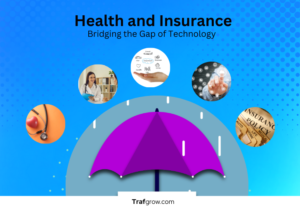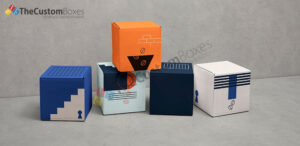
Machine Learning in Test Automation
Hey there, curious minds! Ready to embark on an exhilarating journey exploring the powerful synergy between test automation and the cutting-edge wonder of machine learning? Get set for a mind-blowing experience as we delve into the captivating impact of machine learning in test automation. This blog is all about unravelling the magic that happens when artificial intelligence and automation join forces to revolutionize software testing. From enhancing software quality to boosting efficiency, we’ll uncover the incredible advancements this dynamic duo brings. So, fasten your seatbelts as we dive into the world of machine learning and test automation, and witness how they shape the future of software development! Let’s kick off this adventure together!
The Fascinating Evolution of Test Automation!
Back in the day, manual testing ruled the roost, consuming loads of time and effort. But hold your breath as the winds of change sweep in, bringing forth the automation concept. The emergence of record-and-playback tools marked the first major leap, making test creation a breeze. As technologies advanced, scripting languages and frameworks took centre stage, empowering testers to craft intricate and robust automated tests. But oh, the excitement doesn’t stop there! The advent of machine learning and AI in software testing now opens up a whole new chapter. Test automation is becoming more innovative, self-healing, and capable of learning from experiences. Exciting times lie ahead as this captivating evolution unfolds!
Impact of Machine Learning on Test Automation
Now, let’s take this journey to the next level & explore the impact of Machine Learning (ML) in test automation, unveiling how ML’s intelligent capabilities revolutionize software testing.
Intelligent Test Case Generation:
Gone are the days of manually scripting hundreds of test cases! ML algorithms can now automatically generate test cases based on historical data, user behaviour, known bugs, and previous cybersecurity threats. Witness the time saved and the level of test coverage achieved as ML algorithms explore countless scenarios that a human tester might have overlooked.
Dynamic Test Scripting and Maintenance:
In the ever-evolving world of software development, maintaining test scripts to keep up with frequent changes can be a nightmare. But fret not! ML algorithms can analyze changes in the application and dynamically update test scripts to adapt to the new environment. It ensures that your test suite remains relevant and efficient, freeing you from the mundane task of manual maintenance.
Intuitive Bug Detection:
ML-driven test automation tools possess an incredible ability to identify patterns and anomalies in the application’s behaviour. They can quickly detect potential bugs and vulnerabilities, even in complex scenarios, leading to faster bug identification and resolution. The best part? The more they learn, the better they get at pinpointing issues.
Read also: Ways In Which Artificial Intelligence is Changing Businesses
Test Prioritization for Optimal Coverage:
As a tester, you often struggle to determine which test cases to run first, especially when you’re short on time. ML comes to the rescue! By analyzing historical test results and critical areas of the application, ML algorithms can intelligently prioritize test cases, ensuring maximum test coverage with minimal resources.
Predictive Testing:
The ability to predict defects before they occur sounds like a dream, right? Well, ML algorithms can make it a reality. By examining past defect patterns and code changes, ML-powered test automation can forecast potential weak spots in the application, allowing you to take proactive measures before problems arise.
Efficient Test Data Management:
Testing without realistic test data is like sailing without a compass. ML enables sophisticated data synthesis, ensuring test environments are adequately populated with realistic and diverse datasets. It ensures that your tests accurately simulate real-world scenarios and deliver meaningful results.
Optimizing Test Execution Time:
Nobody likes waiting for tests to complete. ML can optimize test execution by predicting the time required for each test case and adjusting the test suite accordingly. It helps to make feedback cycles & development processes faster and more efficient.
Natural Language Processing (NLP) for Test Writing:
ML-powered NLP can be a saviour for those who aren’t well-versed in scripting languages. Testers can now write test cases in plain English, and ML algorithms automatically convert them into executable scripts. This bridge between testers and developers fosters better collaboration and efficiency.
Cross-Browser and Cross-Platform Testing:
With many browsers and devices available today, cross-browser and cross-platform testing can be overwhelming. ML-driven test automation tools can dynamically adapt to various environments, making cross-platform testing a breeze.
Real-Time Test Monitoring and Reporting:
ML-powered test automation tools can continuously monitor test runs and generate real-time reports. It allows you to closely monitor the testing progress, spot issues early, and make informed decisions to ensure high-quality software delivery.
Prerequisites and Pathways to Success
Embarking on a journey to learn Machine Learning for software testing is an exciting endeavour. Before diving into this transformative field, having a solid foundation in some key areas is essential. Here are the prerequisites to get started with ML for software testing:
1. Programming Skills:
Having a good grasp of programming is crucial for learning ML. Start with languages like Python, as it is widely used in the ML community and has extensive libraries and frameworks that facilitate ML development.
2. Understanding of Software Testing:
Before delving into ML for testing, ensure you understand software testing concepts and methodologies. Familiarize yourself with manual testing, test automation, test case design, and standard testing tools.
3. Statistics and Mathematics:
ML heavily relies on statistical techniques and mathematical concepts. A strong understanding of probability, linear algebra, calculus, and statistics will help you comprehend the algorithms and models used in ML.
4. Data Handling and Analysis:
ML revolves around data. Learn how to collect, clean, and preprocess data for ML applications. Familiarize yourself with data analysis techniques to gain insights from datasets.
5. Basic Machine Learning Concepts:
Before diving into ML for software testing, grasp the foundational concepts of ML, including supervised and unsupervised learning, regression, classification, clustering, and evaluation metrics.
6. Data Visualization:
Being able to visualize data is essential for understanding patterns and relationships. Learn how to use libraries like Matplotlib or Seaborn to create meaningful visualizations.
7. Familiarity with ML Libraries and Frameworks:
Explore popular ML libraries and frameworks like sci-kit-learn, TensorFlow, and PyTorch. These tools simplify ML development and offer various pre-built algorithms.
8. Online Courses and Tutorials:
Take advantage of online courses on AI for software testing or ML in software testing. Numerous platforms like Thrive-ed School, Coursera, Udemy, and YouTube offer comprehensive courses for testers.
9. Hands-On Projects:
Practice is vital to mastering ML. Work on hands-on projects applying ML techniques to real-world software testing scenarios. It will deepen your understanding and improve your skills.
10. Continuous Learning and Experimentation:
ML is a rapidly evolving field. Never miss out on the latest advancements and research papers. Engage in experimentation and learn different ML algorithms and techniques to gain practical experience.
Final Words:
Machine Learning is reshaping the software testing landscape, offering opportunities for enhanced efficiency, intelligent test automation, and predictive defect detection. By acquiring the necessary programming skills, understanding testing fundamentals, and delving into ML concepts, testers can unlock the potential of ML-driven testing. Embracing this transformative technology and continuous learning will empower testers to thrive in the ever-evolving world of software quality assurance, ultimately leading to improved software delivery and customer satisfaction. The future of software testing is brighter than ever before, thanks to the power of Machine Learning.






